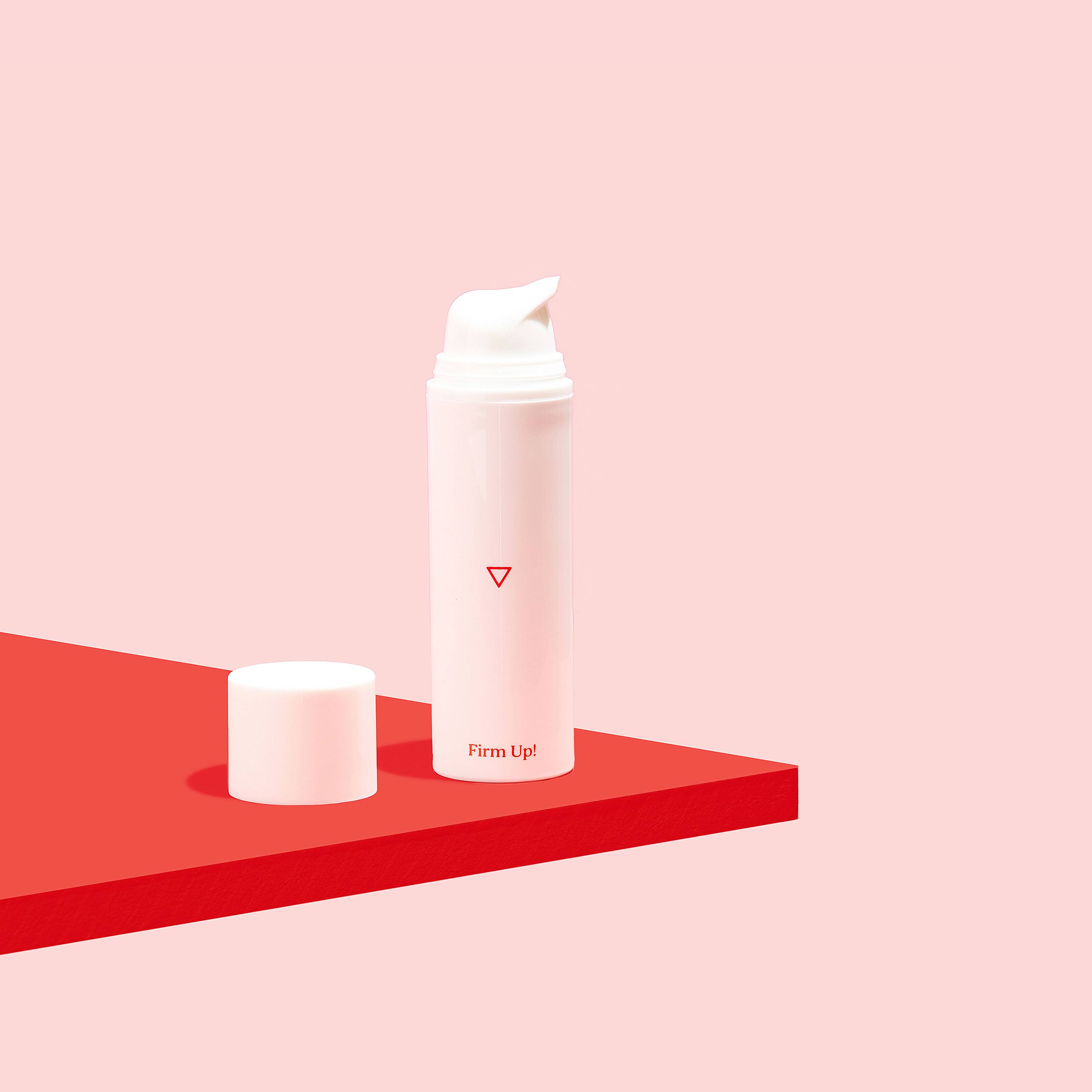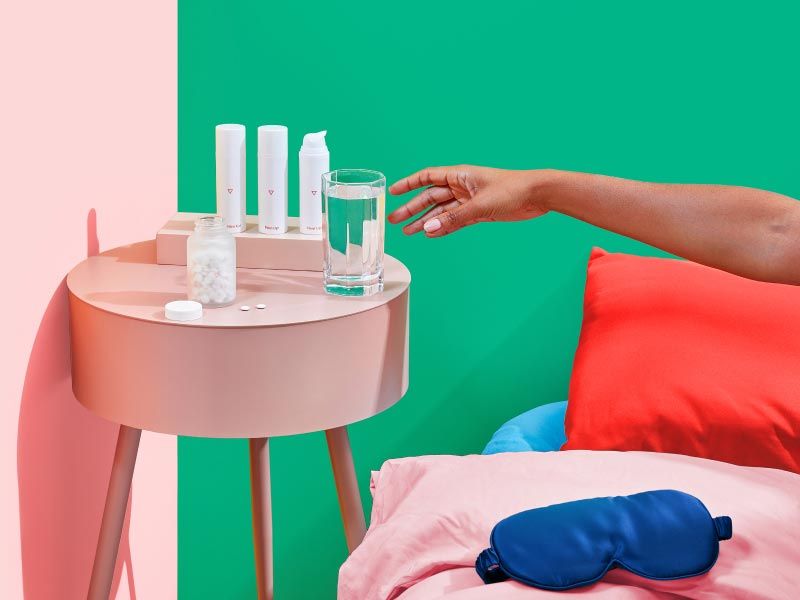
How to Manage the
Tretinoin Purge
Published on
February 20, 2025
Updated on
July 17, 2025
Written by Kathleen Morrison
Medically Reviewed by Andrea Sleeth WHNP-BC, MSCP
So you’ve started tretinoin—and instead of a flawless glow, your skin’s having a full-on freakout. Breakouts, dryness, flaking? Welcome to the purge. And yes, it’s normal. Didn't your doctor warn you?
Tretinoin works by speeding up skin cell turnover, which means it pushes all the gunk that’s been hiding beneath the surface (clogged pores, buildup, acne-causing bacteria) out into the open. That sudden breakout? It’s not your skin betraying you—it’s your treatment doing its thing.
We won’t lie: the purge phase can be frustrating. But knowing what’s actually happening makes it easier to stick with it. This isn’t your forever face—it’s just part of the process. With a little patience (and a lot of hydration), smoother, clearer skin is 100% on the way.
Why does your skin purge with tretinoin
Purging is a very normal process, and while it can be frustrating, it’s also a sign your skin is working hard behind the scenes.
What's the deal, though? Tretinoin is a topical retinoid (a derivative of vitamin A) that helps your skin shed dead cells faster and generate fresh, healthy ones. Like a fast-forward button for your skin cycle—it speeds up cell turnover so you can get to the good stuff quicker: smoother texture, fewer breakouts, and a whole lot more glow.
Wisp treatment options are available only after consultation with a licensed medical professional. You should consult with your healthcare provider before starting a new supplement or treatment regimen. Individual results may vary.
Clogged pores
Your pores are little storage units that collect oil, dead skin cells, and whatever else life throws at your face. Some of that gunk just chills under the surface—those are called microcomedones. They haven’t become full-blown pimples yet, but they’re hanging out, waiting.
Enter tretinoin. It clears out those hidden clogs by pushing them to the surface all at once. That’s why it can feel like your breakouts are getting worse before they get better. But this isn’t new acne—it’s just what was already there, now moving along faster than usual.
Tretinoin speeds things up
Normally, your skin sheds dead cells every few weeks. But tretinoin turns up the volume on that process. By increasing skin cell turnover, it helps those older, dull cells slough off faster, making room for fresh, new ones underneath.
This rapid renewal not only clears out old congestion, it also helps stop future clogs from forming to help treat acne. That means fewer breakouts down the line and a smoother, more even complexion in the long run.
When the tretinoin purge starts (and how long it might last)
So, one minute you’re hyped about finally getting that glow-up, and the next, your skin is breaking out like it’s reliving its teenage years. Totally normal. But it sucks. Here's what to look out for.
What to expect in the early weeks
For most people, the purge shows up around week 2 or 3. That’s when your skin starts bringing all the gunk to the surface faster than usual. So yes, things might look worse before they get better.
Expect a few more breakouts than usual, often in the same spots where you normally get pimples. You might also notice dryness, flaking, or a little redness. It can feel like your skin’s throwing a tantrum, but hang in there—it’s just adjusting to its new normal.
How long purging usually lasts
Skin purging typically lasts about 4 to 6 weeks. For some, it might stretch up to 12 weeks, but that’s on the longer end. The exact timeline depends on your skin’s starting point and how congested things were under the surface.
If you’re still dealing with intense breakouts after the 3-month mark, it’s worth chatting with a provider. At that point, it could be more than just purging, and you may need some extra help or a few tweaks to your plan.
Signs you're dealing with a purge
We know this is hard, but understanding what to expect helps you stay calm and confident through the process.
Breakouts and irritation
One of the biggest giveaways that you’re purging—not breaking out randomly—is where it happens. Tretinoin tends to bring the drama right back to your usual acne breakout zones. If you’re used to seeing bumps on your forehead, chin, or jawline, those are the spots where things might flare up first.
You might notice whiteheads, blackheads, or deeper, more stubborn bumps showing up, along with other skin irritation. It’s all part of the normal process. Tretinoin doesn’t create new issues, it just speeds up the timeline on stuff that was already brewing under the surface. You may also feel a bit of stinging or tingling after applying it. Also normal, and usually temporary.
Dry patches, flaking skin, and tone shifts
Tretinoin is a type of retinoid made from vitamin A, which means it works by boosting your skin’s cell turnover. But when skin starts cycling through cells this quickly, it can leave you feeling like a dry little lizard in the meantime.
Expect some tightness, peeling, or flakiness, especially around your mouth, nose, and chin. Your skin might even look a little red or blotchy, or develop darker spots from healing breakouts. All of this is temporary and part of the process.
How to survive the purge
So, you’ve started tretinoin and now your skin is freaking out a little. Totally normal. The “purge” phase can feel like a rough patch, but with a little know-how (and a lot of moisturizer), you’ve got this.
Keep your routine super simple while using tretinoin
This is not the time for your 12-step skincare experiment. When you’re using tretinoin, less really is more. Think of your routine like a soft hug for your skin: gentle cleanser, hydrating moisturizer, and sunscreen—done.
Skip other active ingredients in scrubs, exfoliating acids, and anything labeled “intense” for now. Instead, just apply tretinoin to completely dry skin (yes, actually dry—wait about 20–30 minutes after washing). And stick to a pea-sized amount for your whole face. Trust us, more product doesn’t mean faster results—it just means more irritation.
Soothe and support your skin barrier to minimize symptoms
Your skin barrier is going through it right now, so treat it with kindness. Go for ingredients that calm and repair without adding drama: ceramides, niacinamide, and cica (aka centella asiatica) are all MVPs here.
And remember, tretinoin doesn’t have to be a daily thing right away. Starting with every other night (or even just twice a week) gives your skin a chance to adjust without going into panic mode. Slowly but surely wins this race.
Also, sunshine and tretinoin don’t mix well, so daily SPF is a must.
Moisturizer and hyaluronic acid
When your skin feels dry, flaky, or tight, moisturizer is your best friend. Choose something rich and nourishing. Think squalane, shea butter, or petrolatum. These ingredients help seal in hydration and keep your skin feeling comfy.
And if you haven’t met hyaluronic acid yet, allow us to introduce you to your new skincare crush. It’s a lightweight humectant that pulls water into the skin and keeps it bouncy. Layer it underneath your moisturizer while your face is still damp for that next-level hydration boost.
Riding out the purging process (you can do it)
We get it—starting tretinoin can feel like a betrayal. Your skin gets worse before it gets better, and you’re left wondering if this glow-up is actually worth the chaos. Spoiler: it is. Just breathe.
The purge phase is your skin doing the work. That uptick in breakouts? It’s your pores clearing house, thanks to tretinoin speeding up cell turnover and getting rid of gunk that’s been hanging around for too long.
This is where consistency comes in. Keep showing up for your skin—even when it’s flaky, moody, or throwing tantrums. A simple (but proper) skin care routine (cleanser, moisturizer, SPF) plus hydration heroes like hyaluronic acid can make a big difference in helping your skin adjust.
Stay the course, go slow with your active ingredients, and focus on comfort over perfection. This isn’t about achieving flawless skin overnight—it’s about building healthier skin from the inside out. Soon, you'll have fewer breakouts, a more even skin tone, and that glow you've been after.
No matter what you're going through, Wisp is here with prescription acne treatments that are designed to help you unlock smoother, clearer skin, with expert support every step of the way. Getting started is simple, and your skin will thank you later.
Frequently Asked Questions (FAQ):
How long does the tretinoin purge last?
The purge usually lasts a few weeks to a couple of months. It depends on your skin, your routine, and how often you're using tretinoin.
What does a tretinoin purge look like?
Expect breakouts that might feel more intense than usual—more pimples, blackheads, and inflamed spots—as your skin starts turning over faster.
When does a tretinoin purge start?
Most people notice it within the first few weeks of starting their treatment.
What are the side effects of a tretinoin purge?
Dryness, redness, peeling, and sensitivity are all common. It’s your skin adjusting, not failing.
This blog post is for informational and educational purposes only and should not be taken as professional advice. Always consult with a qualified professional before making any decisions based on the information provided here.

Firm Up! Wrinkle Cream | Tretinoin (.04%)
Starting at $75
Tretinoin 0.04%, Azelaic Acid 5%, Niacinamide 4% Prescription treatment for wrinkles, fine lines, and other signs of aging.

Oral Spironolactone
Starting at $24
Prescription solution for women struggling with acne, hair loss, and excess facial hair.


